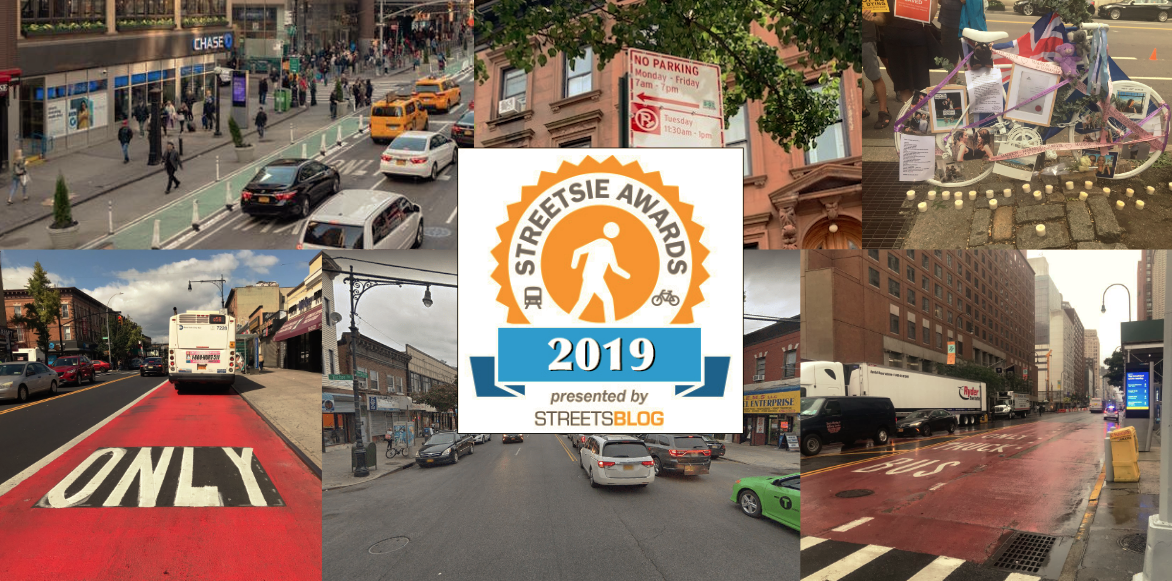As Streetsblog readers know, we mark the end of the year with our annual Streetsie awards for the best and worst people, projects, ideas and efforts in the livable streets movement. We'll be rolling out our year-end awards every day until New Year's Eve, so sit back, look back, and enjoy...
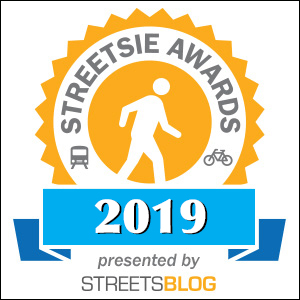
Two thousand nineteen was a year in which Not in My Back Yard groups fought vital transportation projects tooth and nail — often taking to the courts to stop them.
Yet even so, the city's Department of Transportation inaugurated some sterling additions to the urban landscape that will make New York safer, cleaner and faster-moving. Here's a review of the most exciting transit projects of the year:
The 14th Street Busway
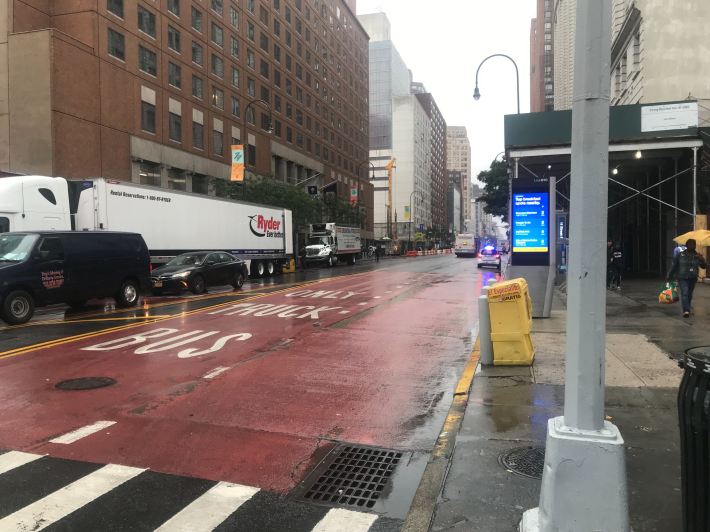
At some points this year, the busway appeared mired in court as NIMBY lawyer Arthur Schwartz and his band of wealthy-neighborhood associations plotted to foil the rollout of a transit project that benefits thousands of daily riders by brandishing specious claims about the need for environmental review. The project debuted in October and has not caused the massive traffic spillover onto side streets that its opponents predicted.
It’s the exact kind of “stand-out” project that urbanists hope will revive the fortunes of cities by cutting carbon emissions, eliminating parking, and reclaiming streets from single-occupancy vehicles.
“The results have been even more exciting than we thought, and it’s lifted our spirits to see the positive response, not just that the buses are moving faster, but the street feels calmer,” DOT Commissioner Polly Trottenberg said. Amen!
Residential Loading Zones
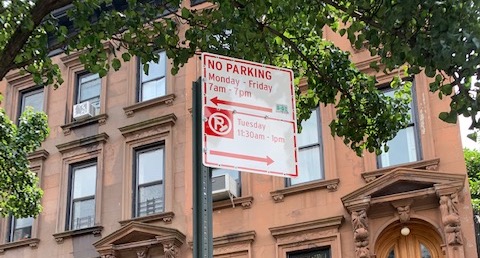
Finally waking up to the streetscape changes wrought by e-commerce and for-hire vehicles, DOT gingerly began a program designating some curb space in residential areas for trucks to load or unload all the parcels that people have been ordering. The need for such zones everywhere is obvious — the glut of double-parked delivery truck, private vehicles and taxis, often blocking bus and bike lanes, has contributed to noise, pollution, crashes and even a number of traffic deaths.
Even so, some car-loving residents of Fort Greene, Brooklyn, complained loudly enough about losing a few places where they stored their private cars for free that the DOT backed off on some streets. But Trottenberg defended and strengthened the program. It should be expanded citywide.
The Morris Park Avenue Road Diet
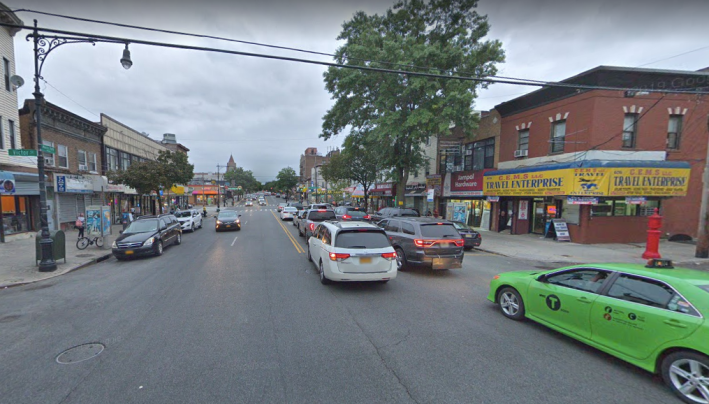
Along Morris Park Avenue in the Bronx, a small group of business owners — led by anti-street safety Council Member Mark Gjonaj — won a court order that for a time halted the DOT’s safety redesign of a roadway where 426 pedestrians and cyclists have been injured, with one fatality, since 2010. The "road diet” plan to tame speedway-like conditions would make it more difficult for residents and delivery trucks to unsafely double-park.
But, again, residents and some business owners objected to a loss of parking on the specious grounds that the city had not conducted enough of an environmental review. But the city prevailed, and an overjoyed Trottenberg heralded the safety benefits.
“As we have seen dozens of times under Vision Zero, simple ‘road diets’ like this save lives," she said.
The Eighth Avenue Road Diet

Fat, fatal Eighth Avenue in Manhattan went on a road diet that will give its pedestrians and cyclists more protection by taking room away from drivers on the Theater District thoroughfare.
The DOT is transforming the area between 38th and 45th streets by reducing car lanes by 20 feet, extending a northbound protected bike lane that ended at 39th Street, and widening, by 10 feet, the overcrowded sidewalk from 39th to 41st streets.
The changes can't come fast enough for the deadly roadway. Between 2013 and 2017, drivers killed one pedestrian on the 70-foot-wide avenue between just 38th and 45th streets, and severely injured 15 pedestrians and five cyclists. There were 220 total injuries in those five years — on just seven blocks! Cyclist Chaim Joseph was killed at 45th Street earlier this year.
The Fresh Pond Road Bus Lane
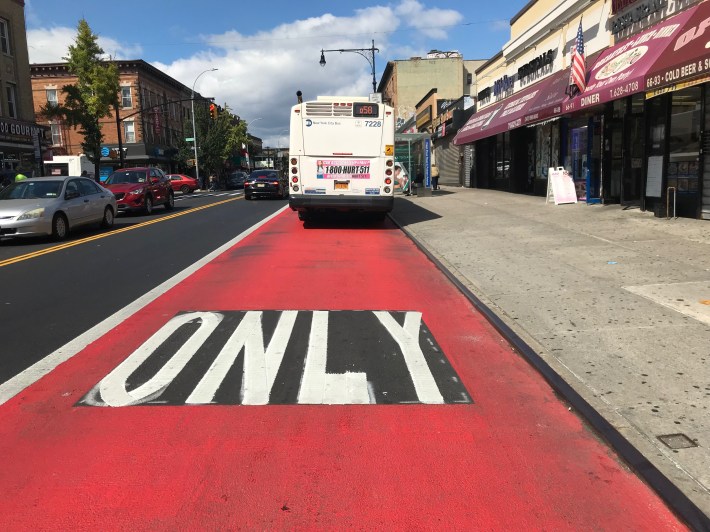
In yet another instance of the few NIMBYs car owners' blocking progress for the many transit riders, some Queens residents (again represented by Arthur Schwartz) took to the courts to try to stave off a part-time, dedicated bus lane on Fresh Pond Road in Ridgewood because it would take some metered parking.
But a sensible judge didn't take their word for it. He went to the street and looked for himself, and ruled for the city. Now thousands of riders are enjoying bus speeds that have risen from the snail's pace of 2.6 m.p.h. to 6 m.p.h, a 125-percent improvement.
The CPW Protected Bike Lane
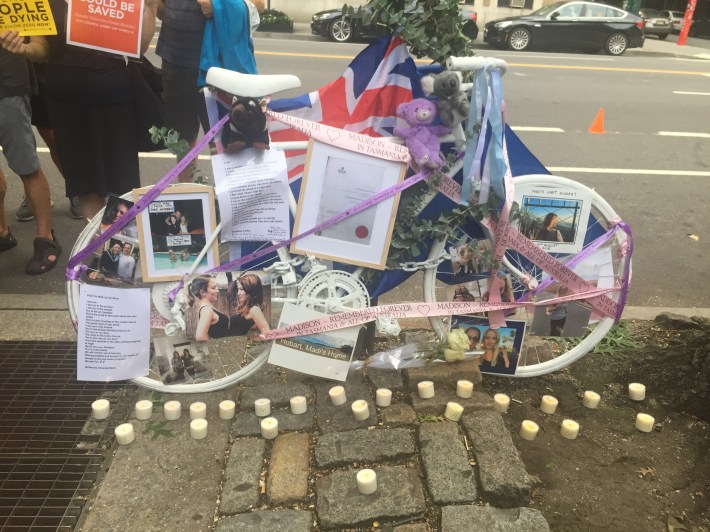
The Central Park West protected bike lane — which now extends north from Columbus Circle to 77th Street, despite the hindrance of a NIMBY lawsuit — was a blood issue for safe-streets advocates. The death in 2018 of cyclist Madison Lyden, who was forced out of the street's then-unprotected bike lane by an illegally parked cab, then run over by a truck — galvanized the bike community, which came out in force to protest the NIMBYs' action.
Not only was the NIMBY crowd's well-funded suit thrown out of court, cars were kicked from the curb through the repurposing of public space that many drivers think belongs to them. Now activists are asking DOT to make the lane even safer, by installing split-phase turning, a design that gives pedestrians and cyclists a separate signal phase from drivers so they can get through intersections, and bus boarding islands, to ensure that northbound buses can safely pick up passengers without having to fight through traffic.
And the Streetsie goes to...
The busway! Nothing gets Streetsblog more excited transportation-wise than this ultimate win-win: a road design that banishes cars in order to help bus riders. May it be the template for further such efforts.
